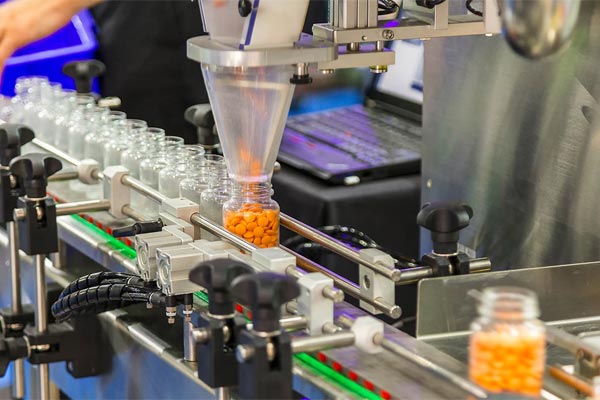Producing eye drops is not like filling any other liquid — the stakes are higher because you’re dealing with sterile formulations, very small dose volumes, and critical safety norms. That’s why eye drop filling machines are engineered to deliver high precision, clean-room compatibility, and contamination control. These machines use advanced pumps (peristaltic, ceramic or piston), sensors, PLC controls, and precision valves to ensure each dropper bottle gets the exact required volume. Many designs also include features like “no bottle, no fill,” automatic capping, nozzle insertion, and inline cleaning (CIP) systems to maintain sterility throughout the process

At FillPack Industries, building a robust and compliant eye drop filling line means more than just installing a machine. It’s about customization: matching the machine head count, pump type, bottle type (glass or plastic), environment class, capping/nozzle fitting integration—everything tailored. A well-designed line ensures minimal downtime, fewer reject units, and full regulatory compliance (GMP, pharma standards). With FillPack’s support, you get turnkey integration (filling + capping + labeling), thorough validation support, and after-sales servicing to keep your ophthalmic production consistent and safe.
FAQs on Eye Drop Filling Machines
What makes an eye drop filling machine different from regular liquid fillers?
Because eye drops require very precise small volumes, sterility, and minimal contamination, these machines use advanced pumps, closed systems, and stringent quality controls (e.g. peristaltic or ceramic pumps, CIP, “no bottle no fill” logic).
What types of pumps are used in eye drop filling machines?
Common ones are peristaltic pumps and ceramic pumps, which allow precise dosing and easy cleaning/sterilization
Can eye drop filling machines also cap and fit nozzles automatically?
Yes — many modern machines integrate filling, nozzle insertion/fitting (dropper nozzles), and screw capping in a single automated proces
What volumes and speeds do these machines support?
They typically work in the range of 2–10 ml (and sometimes up to ~15 ml) for eye drop containers, with speeds varying by head count (e.g. 40–100 bottles per minute depending on configuration).
How is sterility ensured during filling?
Features like laminar flow hoods, self-cleaning zones, CIP (clean-in-place), sealed enclosures, and strict controls help maintain sterile conditions
What challenges should one consider when installing an eye drop filler line?
Challenges include: ensuring materials compatibility (no leachables), maintaining strict environment conditions, validation & qualification, ensuring changeover flexibility across bottle types, and integrating upstream/downstream systems seamlessly.








